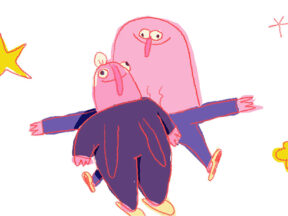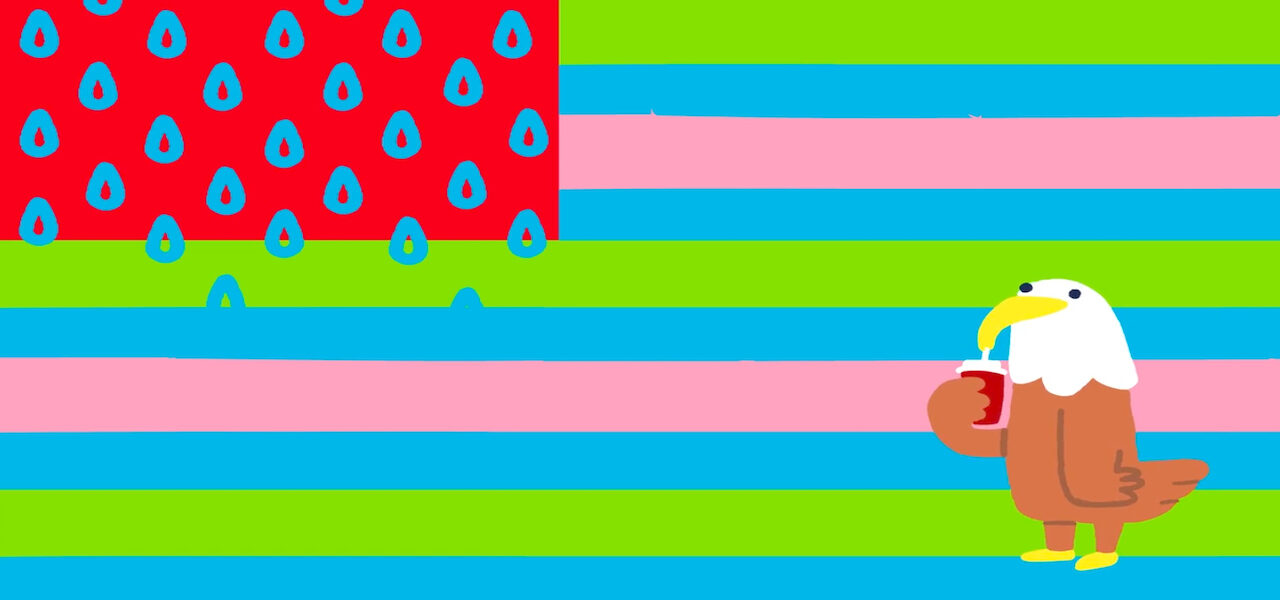
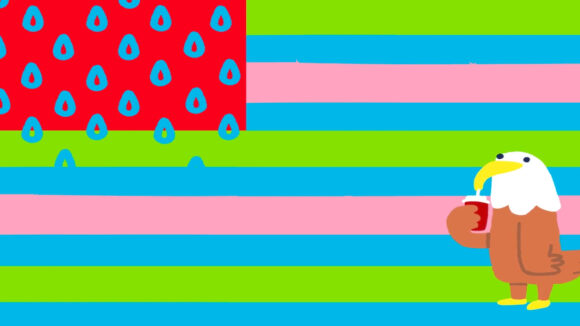
Exclusive Short Film Premiere: ‘Oh Say Can You See?’ by Noam Sussman
Noam Sussman set about making his graduation film Oh Say Can You See? last year, at a time when America felt very fucked. We’re honored to premiere it today, the Fourth of July, when the country feels very, very fucked.
The two-minute short skewers the excesses of American society in a flurry of scatological skits. A skinhead brandishes a gun while policemen arrest a black man inside a fleshy chamber, which turns out to be the rectum of a bobblehead humanoid with a Trump-orange complexion. We watch him hump a piggy bank to the dissonant strains of an out-of-tune Star-Spangled Banner. The Ku Klux Klan make an appearance. It’s all wonderfully crass:
Sussman reached his bleak assessment of America from a distance. Raised in Israel and Toronto, Canada, where he now resides, he actually made this film in Estonia. He took a master’s degree in animation at the Estonian Academy of Arts, drawn by the prospect of studying under famed filmmaking duo Priit and Olga Pärn. Their biting satirical humor and feel for the absurd is echoed in his Oh Say Can You See?
Below, Sussman tells us about how he made the film, how Trump looks to Estonians, and what he’s doing to help with America’s problems…
Cartoon Brew: What prompted the idea for this film — was there a specific event?

Noam Sussman: At the time, I was finishing my previous film Dream Cream. Every day, my partner Ali Kellner (also an animator and filmmaker) would put on political podcasts and we would listen to them while we worked.
There wasn’t one specific event that prompted it. Trump had already been president for a few years, and there was just an overall frustration and disbelief with the Trump administration and his giving voice to the alt-right, so there was already a plethora of material to draw from. I feel like I still didn’t hit all the marks I wanted to, as there is just so much to comment on.
Satire combines clear social commentary and absurdism. Is it hard to strike that balance? With this film, did you test your skits and gags much with others, before entering production?
It is absolutely hard to balance. Especially coming from an Israeli-Canadian perspective, I knew that I’m pretty removed from the experience of living in America. I also had never really made anything so political and potentially controversial before. Being Canadian, we see America through a lens where it’s hard to understand a lot of the injustices that happen there. There is a difference between the systems we live in, and it’s very easy to judge.
So yes, I tested out my ideas with friends back in Canada and in the U.S, to see what they thought of it. Mostly, I just needed reassurance that everything is clear in order to prevent misinterpretations, since the issues I portrayed are quite serious.
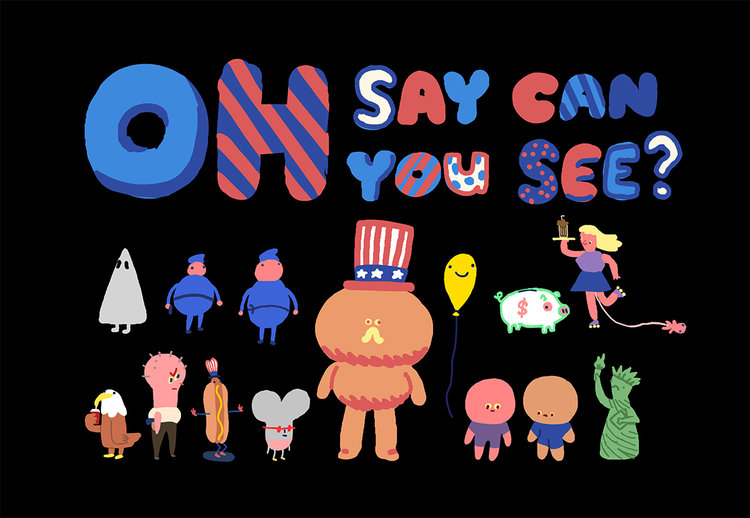
Generally, what was your process? Did you board everything? How long did the film take you to make?
I went into the process thinking I’d be making a non-narrative film. I had a lot of little doodles of American imagery in my sketchbook, and I fleshed it out more on the computer. But I didn’t have a proper storyboard off the bat. It was through a process of elimination that I made the narrative work, so I essentially had a whole bunch of ideas and mashed them together, and that’s probably why the story can feel a little disjointed (something that I like having in my films).
I also incorporated an old story idea into this film, the restaurant in his butt — an idea that seemed to work well in the context of Oh Say Can You See? Once all the imagery came together, it didn’t take more than a few months to animate, since there are hardly any backgrounds, and I used a lot of loops in the animation process.
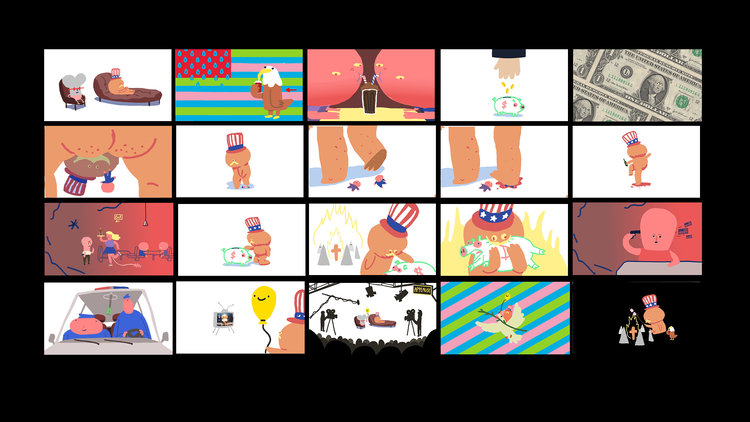
How was America perceived around you in Estonia? Did you discuss its politics much with people there?
I took an Estonian 101 class as an elective. The teacher was a big fan of Trump, but most people rolled their eyes when she brought him up. The students were from other parts of Europe mostly, however my roommate was American. During my stay, it seemed like Trump was generally well-liked in Estonia, but I didn’t talk to enough people about the subject to make a proper judgement.
My close-knit group of friends in Estonia were all on the same page regarding Trump. Although we had conversations about Trump being bad for America, American issues feel a lot more relevant and significant when you live just north of the border.
Why did you choose to study under Priit and Olga Pärn? What guidance did they give you?
I chose to study under Priit and Olga Pärn since they both like to push the envelope and come up with unique stories for their films. Also, I watched Priit’s The Night of The Carrots (1998) at the Ottawa International Animation Festival’s 40th anniversary back in 2016 and was blown away by it, which pushed me to apply. It was quite a big move to relocate from Toronto to Tallinn for two years, but it was worth it.
Priit and Olga helped me eliminate some shots that weren’t working, and we brainstormed solutions for the ending.
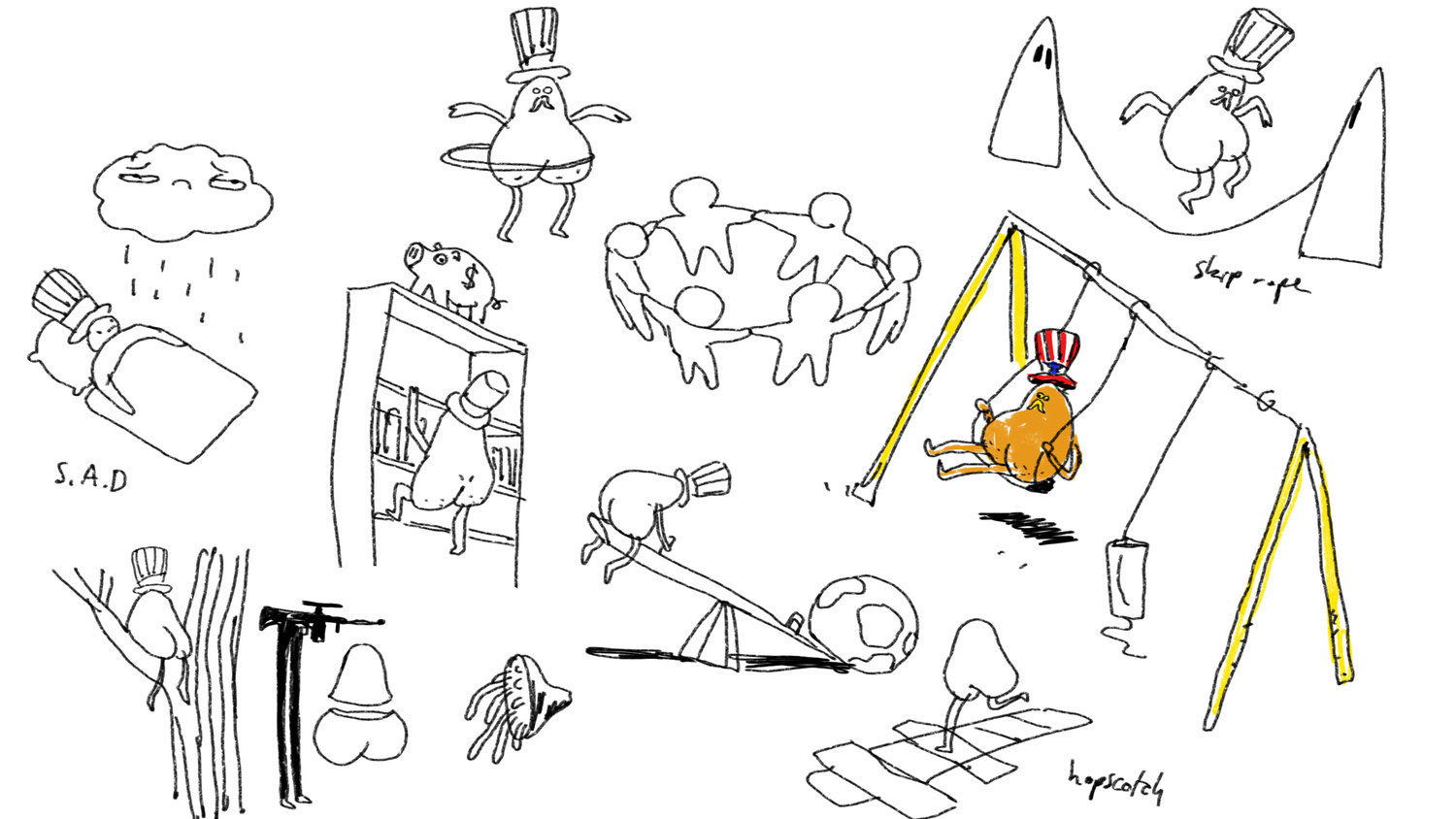
You decided to offer a preview of the film to those who donated to a charity of your choice. Had you tried this model of donation before? Do you think it has the potential to work on a bigger scale?
I had never tried it before, but the film felt somewhat relevant to recent events and Black Lives Matter protests, so it felt like the right thing to do. I wanted to try and help in some way, and just making a donation myself didn’t seem like enough. I saw that other artists on Instagram were able to raise money and donate through their art, which inspired the move. The film raised almost CAD$1000, which I’m pretty happy about.
I think it does have the potential to work on a bigger scale. I know that the Toronto Animated Image Society are having their annual showcase online, and they are encouraging people to donate to Black Lives Matter as the price of admission. This is also happening in the music industry: the band Jerry Paper, along with many others, participated in a fundraiser performance to donate money to help fellow Americans with their government stimulus checks. So I think these kinds of artistic initiatives are great ways to get people to donate.
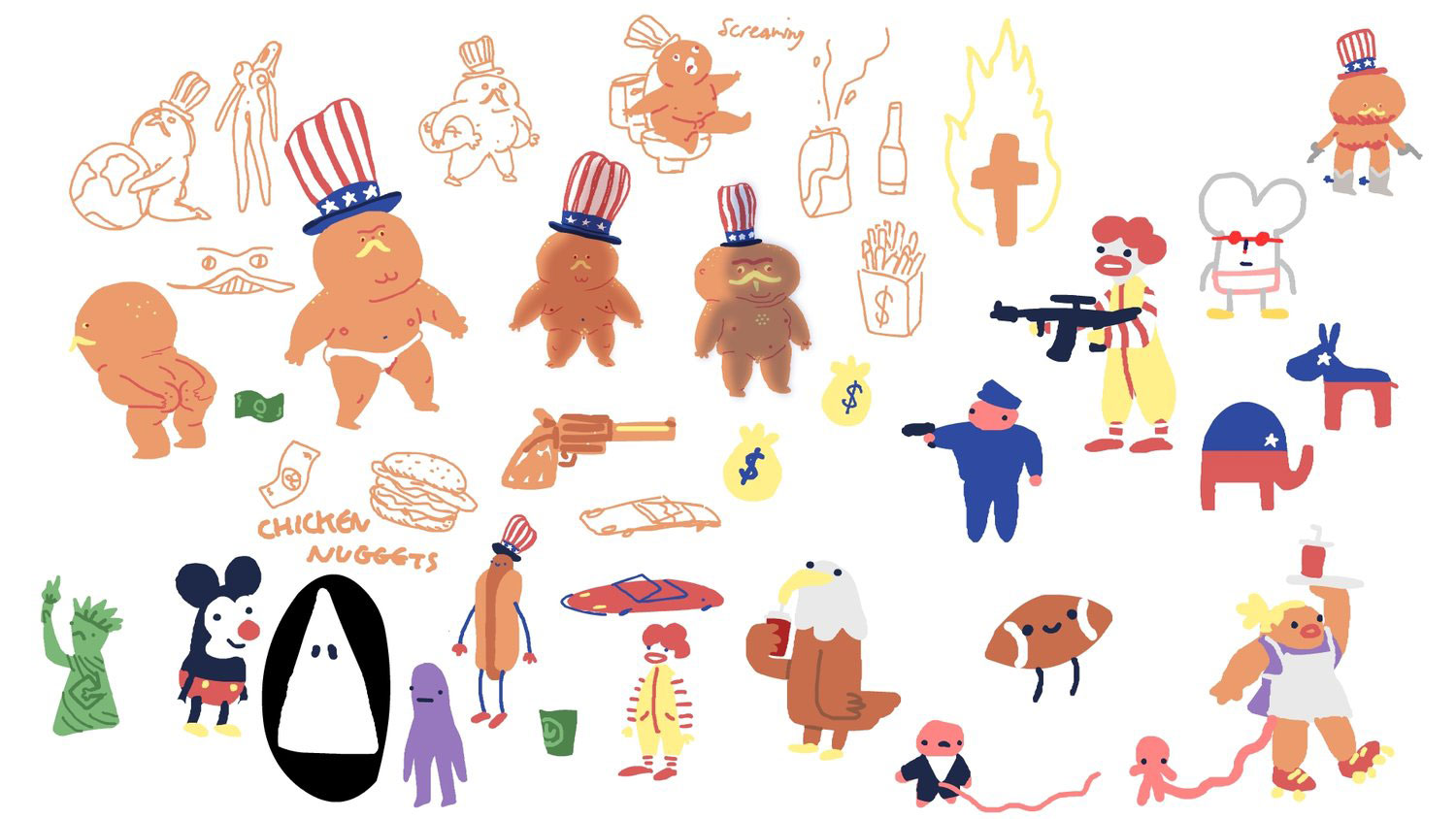

.png)
